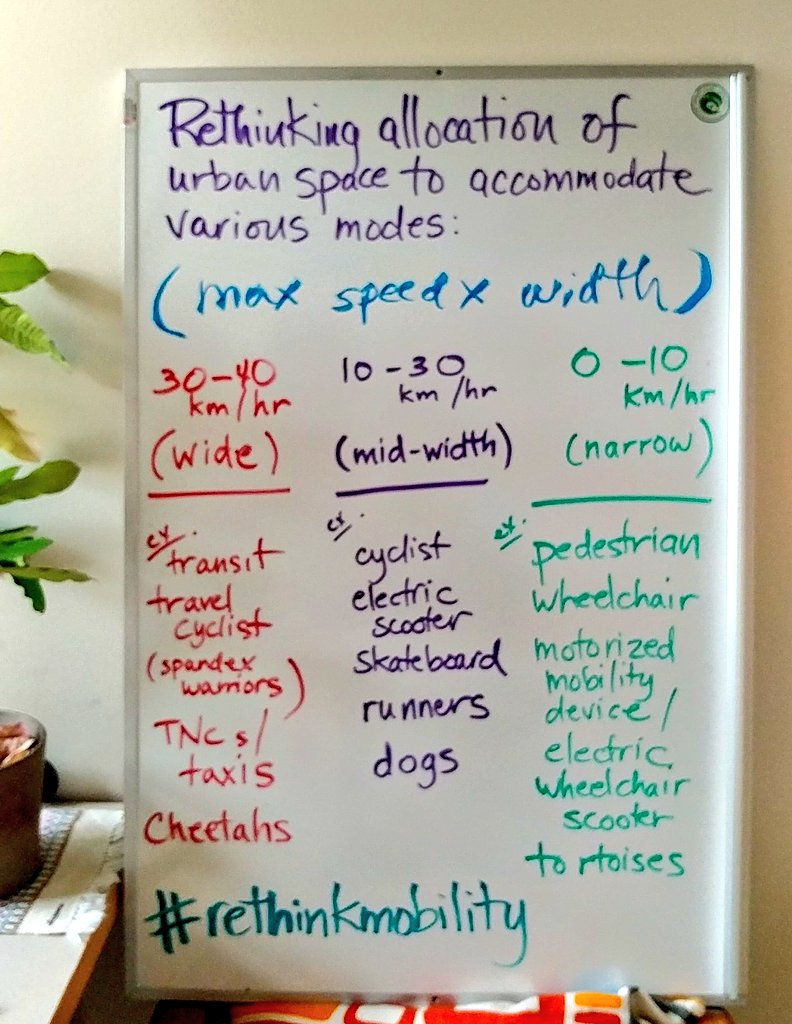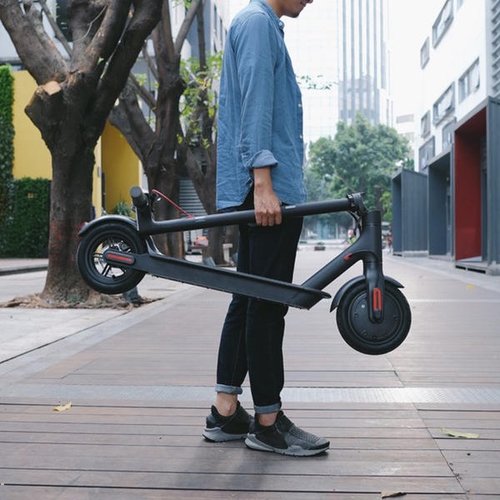Highlights
We have run out of room for growth of personal automobiles in urban areas
Light Electric Vehicles (LEVs) allow people to travel using the bike lane
Several hundred million LEV rides are forecasted for 2019 and growing 10x annually over the next 5 to 6 years
There will be an explosion of new LEV manufacturers and forms in 2019
LEVs provide multiple opportunities for multiple new and existing companies
Problem
We are bumping up against the limits of growth within American cities. This limit is particularly felt in our transportation system. As cities become more densely populated, they run out of room to build additional roads for personal automobiles. Ideally, public transportation would fill this need, but cities are slow to act. Most public transportation does not operate in a dedicated lane, leaving buses to travel the same speed or slower than the already gridlocked traffic.
Created from data provided by the November 2015 Atlanta Regional Commission Activity Based Model Calibration Report
Americans use personal automobiles to move roughly 2 trillion miles a year. Urban transportation infrastructure is under the most pressure during peak travel to and from work. In a car loving city like Atlanta, 63% of the tour lengths from home to work are less than 15 miles.
Tour lengths below 15 miles don’t necessarily need a personal automobile. The overcrowding of our roads has led to rising bicycle ridership and cities supporting this growth with infrastructure. Bike lanes cost 10% the cost of a car lane and return a higher throughput of people. In London, they found that protected bike lanes yielded 5x the throughput of a traditional road.
Despite the throughput and health benefits of bicycles, they can be uncomfortable on hills, in weather or carrying a load of groceries. Especially if the destination is a work place without a shower.
Light Electric Vehicles
From a blog called “Do We Need a New Theory and Name for “Bike Lanes”?”by Human Transit
Light electric vehicles (LEVs) have 1 to 4 wheels, are powered by a battery and generally weigh less than 200 lbs. (100 kg). These LEVs are allowing people to substitute their automobile for tour lengths between 0 and 15 miles with ease. They are small enough to be used in a 4-foot bike lane but strong enough to maintain speeds of 18 mph (30 km/h). Using the bike lane removes LEVs from automobile traffic and allows people to move efficiently and comfortably.
What is going on
Bird started as a dockless electric scooter sharing company in September 2017. It drops off e-scooters on sidewalks for rent in over 100 cities allowing people to rent them for $1 plus $0.15/min. Bird quickly rocketed to 10M rides covering 14M miles in less than a year. Today, over a billion dollars have already been invested in Bird and its competitors. New LEV forms are being distributed and new business models are being tested like franchising and scheduled delivery.
Shared vs owned
Riders use an app to find LEVs to ride, but devices can be too far away or broken when they are needed. If a rider completes a leg of a tour, it might be rented by someone else, so she will have to find another way to finish her tour home. Ownership is the only way to make sure the device is available all of the time. This is why less than 1% of personal automobiles on the road are shared. Unlike cars and bicycles which are sold through strong local dealership networks in the United States, LEVs are mostly purchased through the manufacturer’s website or on Amazon. Often including an offer of mailed delivery within days and optional financing.
The high demand of what was thought to be a toy, surprised the top e-scooter manufacturers Xiaomi and Ninebot Segway. As they tried to keep up with Bird and its competitors’ orders, personal orders went unfulfilled for months and sometimes were eventually cancelled. This unfulfillment is one reason for low ownership. LEVs come from multiple, mostly unknown manufacturers and in different forms untested by the purchaser. This mix creates an intimidating purchasing environment. Most people do not want to spend more than $400 to commit to a manufacturer and form when they are not sure how they will use it, how they will maintain it and, with a development cycle of roughly a year, how long this LEV will stay relevant.
Shared LEVs are used by multiple people of all different sizes and riding competencies every day. They are left outdoors in all weather conditions and have a team of chargers who move groups of them in vehicles of all sizes. As a result, LEV sharing companies are pushing manufacturers to produce LEVs with higher durability and longer charges. Manufacturers achieve these needs at the expense of size, weight and general portability. This is shown by Bird’s initial change of the Xiaomi Mi electric scooter was to remove the folding hinge from its neck to fix it in place making it more durable but less portable. After a year of operation, Bird designed and manufactured the first e-scooter produced strictly for dockless sharing, the Bird Zero, a heavier, taller, longer, wider, longer range e-scooter.
Sharing company demands contrast the demands of owners of personal e-scooters. Owners have more riding experience with a single device and will usually travel less than 12 miles a day. They need to walk up and down stairs, ride elevators, hop in and out of cars/trains/busses/(planes?) with their device. They value portability above length of charge and the high durability needed for multiple uses a day by novices and being left in the rain.
Other than the e-scooter
The e-scooter is not the only form these LEVs will take. E-bikes are now 1 in 3 new bikes sold in Germany, 1 in 2 in Holland, and are growing across the rest of Europe and the US. E-bikes allow for multiple new forms including delivery vehicles and child carriers. Bosch is currently the leading electric bike system (battery and motor) used in the top bicycle manufacturers. Unlike most LEVs, E-bikes are sold through the existing strong bicycle dealership networks within the US.
Other notable LEVs are less popular due to their difficulty to ride, like the e-board or the e-unicycle. We are only just beginning to realize the potential of combining a miniature motor with a miniature battery.
Opportunity
Horace Dediu, of the Micromobility podcast, forecasted a 10X annual growth in LEV trips for the next 5 to 6 years (“Dediu’s Law”). This means ridership could climb to several hundred million rides in 2019.
Due to the quick success of LEV companies since September 2017 and an annual LEV development cycle, we can expect an explosion of new LEV manufacturers and forms in 2019 beginning at CES next month. This explosion should continue over the next few years similar to the explosion of manufacturers and forms in the mobile phone industry in the late 1990s.
What makes LEVs different from mobile phones is that LEVs are context specific. Different LEVs will be used for different jobs. A person riding alone to and from work might use an e-scooter, but if his tour stops to drop off a child at daycare, he could use an e-bike. Additionally, different cities have different rules, infrastructures, topographies, weather, and densities so they will have different solutions. Location will be extremely important for which LEV forms become popular, how they are used and how they develop.
The Local LEV Shop
Many of the established bicycle dealers are not ready to accommodate the e-bike demand. They either do not understand the market or are not able to provide services like maintenance and custom work. Custom work can include everything from custom paint to modifying an e-bike’s carrying capabilities for delivery companies. Furthermore, there will be many new manufacturing entrants into this space looking for local representation. There is a strong opportunity to become “The Local LEV Shop” in every city in the US.
New Ownership Model
LEV purchasing is an intimidating experience. Most people do not want to spend over $400 to commit to an unknown manufacturer and form when they are not sure how they will use it, how they will maintain it and, with a development cycle of roughly a year, how long it will stay relevant. LEVs can have an ownership model similar to mobile phones. This can happen in two ways.
1. An upgrade service, similar to T-Mobile’s Jump mobile phone program, allowing a purchaser to upgrade to the latest LEV after 12 months or once half of the device is paid off.
2. A monthly rent to own service, similar to Aaron’s, allowing people to avoid large upfront payments by making affordable monthly payments instead. And once all of the payments are made, it is owned. Total payments cover the cost of the device and cost of the rental.
These services can be offered directly from the manufacturer but, due to most manufacturers being unknown, they probably will be more successful coming through a third party. Like mobile phones went through mobile phone carriers. Also, like phones, LEVs are small and light enough to be maintained and swapped through the mail.
Additional Benefits
There are two major collateral benefits created by the adoption of LEVs: universal basic mobility and a reduction in pollution. Universal basic mobility addresses income inequality by simply getting people to jobs. The lack of access to effective mobility negatively affects an individual’s economic and social opportunities. A single premium electric vehicle ($53,000) costs as much as 106 LEVs. The cost of gas to complete a daily trip of 5 miles over a year in a conventional vehicle (28mpg) is $185. This same trip costs under $3 on an LEV. As the costs drop even further, access to mobility will seem like a right, like internet and phone connectivity.
LEVs are capable of reducing pollution in manufacturing, shipping, and operation compared to personal automobiles. A single occupant car weighs 10x its payload while a LEV can carry up to 10x its own weight. A single kilowatt hour moves an electric vehicle 4.1 miles while it can move an e-scooter 82.8 miles.
Conclusion
A slide titled The Unbundling is Coming from a presentation called When Mobility Attacks by Horace Dediu on September 6, 2018
LEVs provide a solution to a limited transportation system. 2019 will be the beginning of a wave of new LEV manufactures and forms that will last for years to come. Location will be extremely important for which LEV forms become popular, how they are used and how they develop. The rise of LEV use will lead to an unbundling of the use of the personal automobile followed by a change in transportation infrastructure. Just like mobile phones, there is an opportunity for multiple winners over the next few years.















